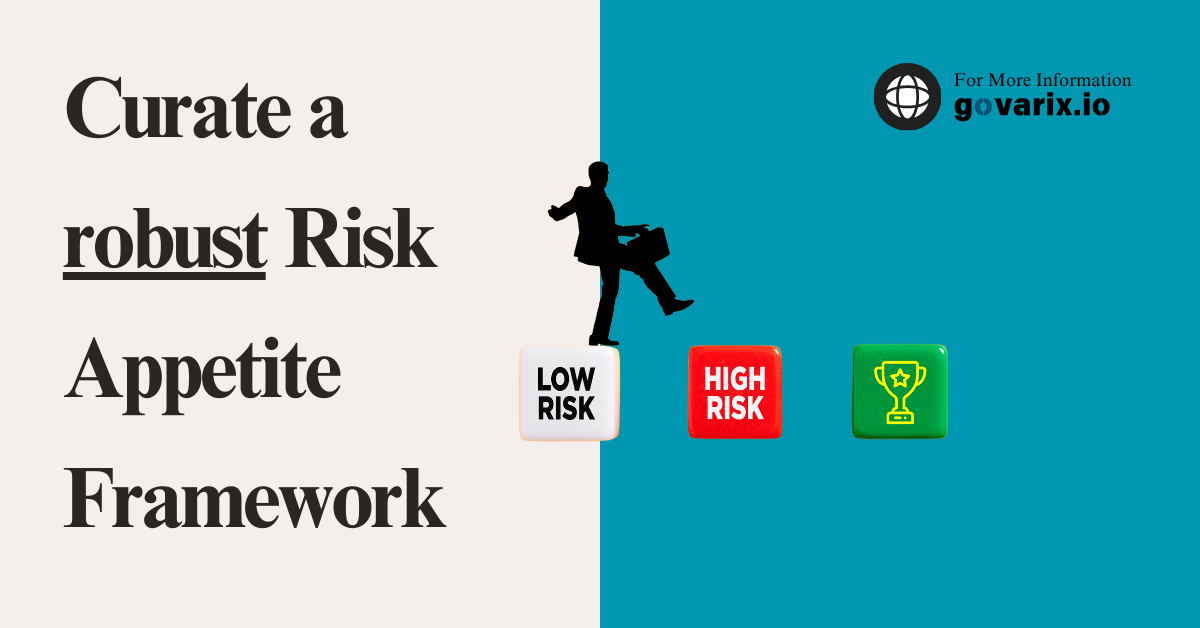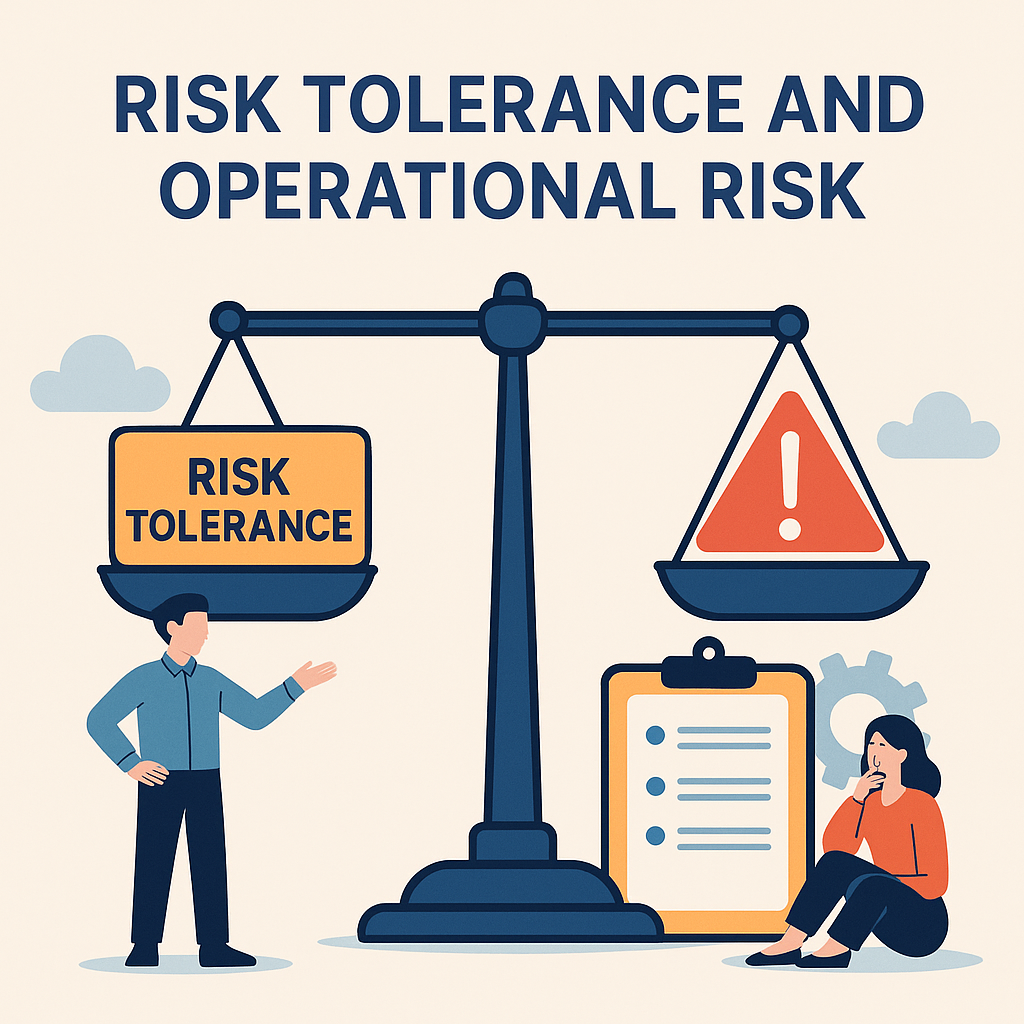Introduction
A well-structured Risk Appetite Framework (RAF) is crucial for businesses to navigate uncertainties while achieving strategic goals. However, defining risk appetite and tolerance is only the first step—ensuring its effectiveness through rigorous testing is equally important.
This guide will explore five key tests businesses must apply to evaluate whether their Risk Appetite Framework (RAF) is practical, measurable, and aligned with business strategy.
By implementing these tests, organizations can identify weaknesses, improve governance, and enhance decision-making.
Test 1: Clarity & Understanding Among Decision-Makers
For a Risk Appetite Framework to be effective, it must be understood and applied consistently by decision-makers at all levels.
Example:
- A banking executive must clearly understand how much credit risk they are allowed to take when approving loans.
- A Chief Risk Officer (CRO) should ensure that risk appetite statements are not vague or theoretical, but instead provide clear operational guidance.
How to Test:
- Conduct surveys and interviews with key decision-makers.
- Ask executives to explain risk appetite in their own words—if explanations vary widely, the framework lacks clarity.
- Use real-world case studies to check if managers apply risk appetite correctly in decision-making.
Test 2: Aggregation & Interconnected Risk Levels
A risk appetite framework must allow businesses to assess risks across multiple departments and link them to an enterprise-wide perspective.
Below are some of the examples.
- A manufacturing company faces supply chain risks at the operational level, but these risks must also align with the strategic risk appetite for global expansion.
- A bank must aggregate individual loan risks to assess overall credit exposure limits.
How to Test:
- Use Risk Aggregation Models to assess whether department-level risks align with corporate strategy.
- Conduct enterprise-wide risk stress testing to evaluate interconnected risks.
- Ensure risk limits at different levels (strategic, operational, tactical) align and do not create unintended conflicts.
Test 3: Adaptability to Changing Market Conditions
Risk appetite should not be static—it must adapt to market fluctuations, economic downturns, and regulatory changes.
Example:
- A retail chain expands aggressively during an economic boom (high risk appetite) but must quickly adjust risk appetite in response to a recession.
- A fintech company initially takes high cybersecurity risks to innovate but lowers its risk appetite after new data privacy laws (GDPR, CCPA) come into effect.
How to Test:
- Conduct quarterly or annual reviews of the Risk Appetite Framework.
- Implement scenario analysis (e.g., how risk appetite changes in a financial crisis).
- Track Key Risk Indicators (KRIs) to signal when risk appetite adjustments are needed.
Test 4: Measurability & Practical Application
A common failure in risk appetite frameworks is that they are too vague or theoretical. Risk appetite must be quantifiable and enforceable.
Examples:
❌ Weak Risk Appetite Statement: “We aim to minimize cybersecurity risks.”
✅ Strong Risk Appetite Statement: “We will maintain a breach probability of less than 0.5% annually and enforce data encryption on 100% of customer transactions.”
How to Test:
- Set specific, measurable risk tolerance limits (e.g., “Not more than 3% annual budget deviation for R&D investments”).
- Use Key Risk Indicators (KRIs) and Risk Control Indicators (RCIs) to track compliance.
- Validate risk appetite with historical data (e.g., “Have we stayed within our stated credit risk limits in the past 5 years?”).
Test 5: Integration with Decision-Making Processes
A Risk Appetite Framework should directly influence business strategy, investments, and operations.
Example:
- A real estate investment firm uses risk appetite guidelines to determine maximum property exposure per region before making purchasing decisions.
- A telecom company adjusts its market expansion strategy based on its predefined risk appetite for political instability in emerging markets.
How to Test:
Ensure Board of Directors & Risk Committees reference risk appetite in major decisions.
Assess alignment between risk appetite and strategic objectives—are high-risk projects approved against company guidelines?
Conduct post-mortem reviews of failed business initiatives to check if risk appetite warnings were ignored.
📊 Summary on Five Tests for a Strong Risk Appetite Framework
| Test | Objective | How to Apply | Example |
|---|---|---|---|
| 1. Clarity & Understanding | Ensure managers understand risk appetite | Conduct surveys & case studies | A CFO can clearly articulate risk appetite for capital investments |
| 2. Aggregation & Risk Linkage | Align risk appetite across business units | Use enterprise-wide risk models | Credit risks in lending align with corporate financial strategy |
| 3. Adaptability to Market Changes | Risk appetite evolves with external conditions | Perform stress testing & KRIs tracking | Retail adjusts expansion risk after an economic downturn |
| 4. Measurability & Practicality | Risk appetite must be quantifiable | Define measurable limits & KRIs | A bank sets a strict 5% maximum default rate |
| 5. Integration in Decision-Making | Embed risk appetite into strategic decisions | Link risk appetite to investment approvals | A telecom company follows risk limits in emerging markets |
Final Thoughts: Why Testing Your Risk Appetite Framework is Critical
An ineffective Risk Appetite Framework can lead to poor decision-making, regulatory penalties, and financial losses. By applying these five essential tests, businesses can validate, refine, and optimize their risk management strategies.
By continuously monitoring, measuring, and adapting risk appetite, companies can achieve better governance, financial resilience, and competitive advantage.
References & Further Reading
- IRM Risk Appetite & Tolerance Guidance (Institute of Risk Management, 2024)
- Risk Appetite Statements: Best Practices & Latest Research (2024)
- ISO 31000 Risk Management Guidelines – www.iso.org
- Financial Stability Board (FSB) Reports – www.fsb.org
- How to draft risk appetite statements [Step by step guide]









